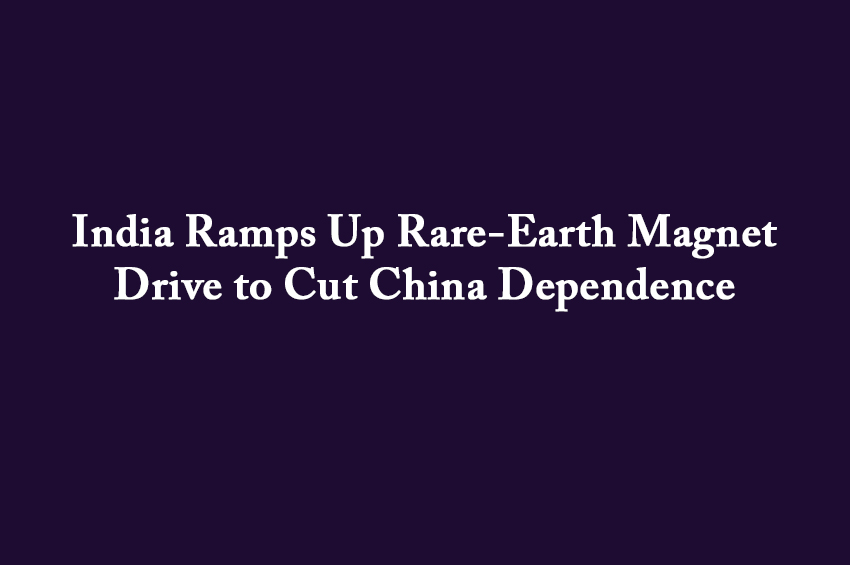Winning Bizness Desk
Mumbai. New Delhi is charting a strategic course towards reducing its dependence on Chinese‑made rare earth magnets following April’s Chinese export restrictions. These magnets, vital to sectors ranging from electric vehicles to defence technologies, are currently in short supply due to Beijing’s tightened licensing. India’s Ministry of Heavy Industries is now developing fiscal incentives—such as production-linked subsidies—to significantly boost local magnet manufacturing
Automotive Industry in Crisis Mode
The ripple effects of China's export curbs have triggered alarm within India’s auto sector. Major players, including Suzuki, have halted production of models like the Swift, citing component shortages, while the Society of Indian Automobile Manufacturers (SIAM) warned that domestic car output could come to a grinding halt between late May and early June without urgent relief
Untapped Domestic Reserves
Despite India holding the world’s third‑largest rare earth reserves—approximately 6.9 million tonnes, sufficient for around 450 years of domestic use—actual mining and processing activities remain minimal. State‑run IREL primarily allocates its output to defence and nuclear sectors, leaving critical industries like auto and renewable energy largely dependent on imports
National Critical Mineral Mission and Neodymium Push
Launched in April, the National Critical Mineral Mission aims to unlock India’s mineral potential and initiate exploration and extraction of strategic elements like neodymium, used in high‑performance magnets. However, with domestic processing infrastructure still lacking, India is even exporting neodymium—for example, sending nearly $7 million worth to Japan’s Toyota Tsusho between January and April
Price Gap and Policy Solutions
To support local manufacturers and narrow the cost differential with cheaper Chinese imports, the Ministry of Heavy Industries plans to introduce financial subsidies. These would cover part of the cost margin, making Indian magnets more competitively priced. Discussions are at an advanced stage, with meetings planned between industry stakeholders and government officials to finalize funding and policy guidelines
Rising Geopolitical Stakes
China dominates about 70% of global rare earth mining and nearly 90% of magnet processing, granting it substantial leverage. Its export restrictions have sparked diplomatic pressure from global players, including India, Japan, and Europe, all pushing for quicker export license approvals. The standoff highlights the strategic need for supply chain diversification in critical sectors such as automotive, clean energy, and national security
All in a Nutshell
1. China’s April export restrictions triggered a critical magnet shortage affecting global industries, especially India
2. India’s auto sector faced urgent disruption: Suzuki paused Swift production and SIAM warned of a production halt by June
3. New Delhi plans fiscal and PLI‑based incentives to jump‑start domestic rare earth magnet production
4. India holds vast rare earth reserves (6.9 MT), yet under‑leveraged due to limited processing investment
5. April’s National Critical Mineral Mission is advancing neodymium exploration, though processing remains weak
6. The government may subsidize the cost gap to make Indian magnets price‑competitive with Chinese counterparts
7. Diplomatic efforts, including delegations to Beijing, are underway to accelerate Chinese export license approvals


